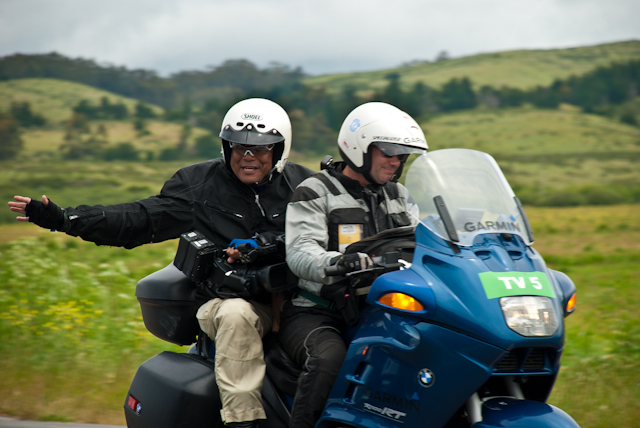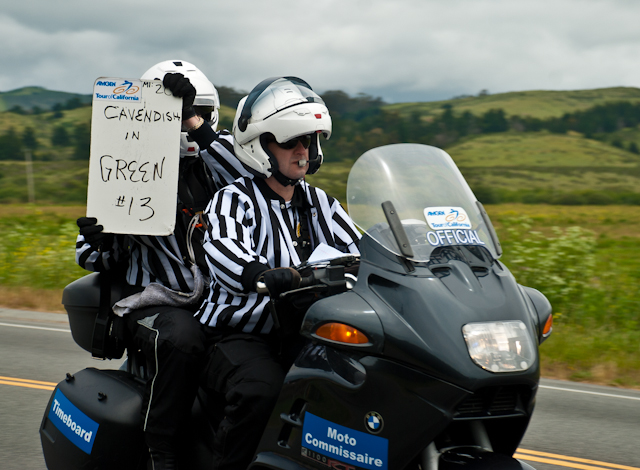Mark Cavendish in green riding along side Lance Armstrong
The first thing to think about is if you want a particular angle on the riders or a certain background, getting both is difficult. You scout your area days in advance and you run into other photographers doing the same.
The peleton passes by the historic Johnston House
Then you must consider road closures. The police and the peleton are most unpredictable. The best bet is to get there early and bring some food and a chair.
Research the race and riders. Know their colors. It helps if you can follow the race on your smart phone as they approach. Is there a break-away group? Is there a sprint or feeding station nearby. All these factors may affect if you want a fierce racing shot or one of everyone sitting up, eating and throwing half empty water bottles at you. Then again, they may not.
Unless you photograph bikers every weekend, there is no time to practice. If you are smart, you practice by shooting all the support vehicles, press motorcycles and police that go by before the riders. That is not a bad idea because, no sooner that you see the riders approaching, they are on top of you and then they are gone.
Access helps you get the shot
Keep both eyes open so as not to miss anything, trip over someone else, get in the way or be hit by a vehicle.
Scouting the route, I decided to show something of Half Moon Bay and also try for a shot on the Tunitas Creek hill climb. I tried to get the riders with the green hills and the historic Johnston house in the background and was successful. Are they in focus? Not very. A faster camera would help.
I then jumped in my car and drove up to Woodside where Tunitas Creek crosses Skyline drive hoping to park, walk down the hill and get a shot of each rider's faces showing the pain of the climb.
I was lucky to get a non-muddy parking spot about a half mile from the intersection. The top of this mountain was in the clouds. Water dripped from the trees and down my back as I protected my camera under my coat. A thousand people crowded the intersection, many shivering in biking attire. Bicycles covered every bit of ground that wasn't occupied by spectators. As I approach, the Amgen van drives through saying the riders are one mile away. Holy Moly, I wanted to hike down the road a mile or 2 to get my shots.
I squeezed through to the middle of the street and hightailed it down hill, dodging police on motorcyles and speeding support cars loaded with spare bikes. I found a break in the redwood trees that let in a little bit of light through the fog and took my place along side a dozen other photographers looking for the same shot, and just in time. Balancing on a small mound, a steep slide of mud on one side and the road on the other, I squeezed off a few blurry shots between the other photographers as the peleton roared by.
Lance (second from left) with the peleton out of the fog on Tunitas Creek road. A fellow photographer on the right
That Tunitas Creek climb was nothing for these stellar atheletes. Here, I'm thinking about the Pyrenees in France and how it tests the Tour de France riders. They should be spread out, struggling up the hill, moving relatively slow with pained concentration on their face. Think again.
I scored a few pictures and learned a few lessons. All is good. Maybe, the climb out of San Jose to Modesto will give me those shots I want. Or staking out a corner at a time trial would provide some great opportunities. Those vantage points were more of a commitment than I had time for this year.
Team Radio Shack on Tunitas Creek road









